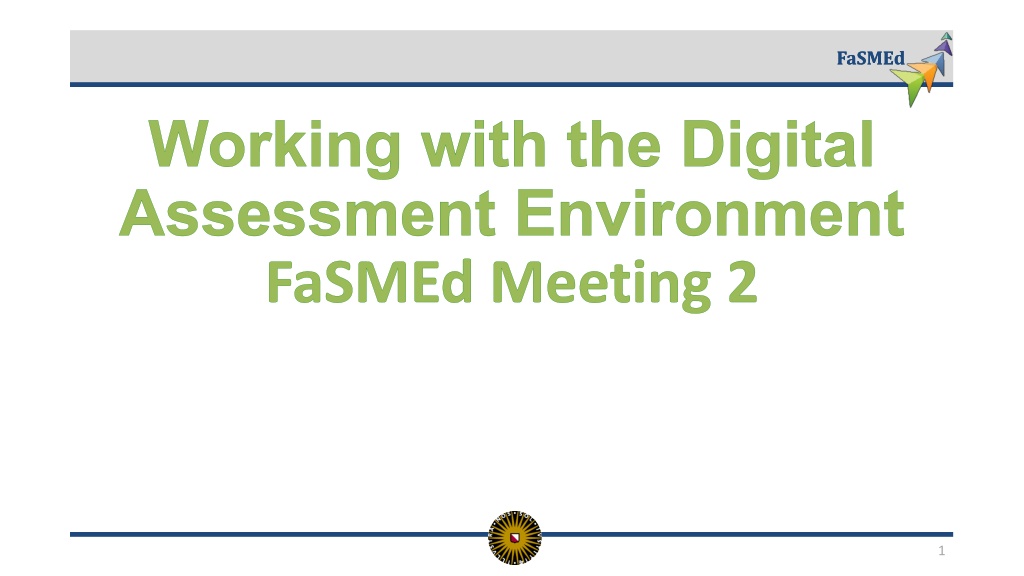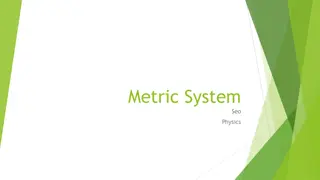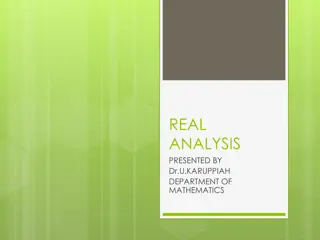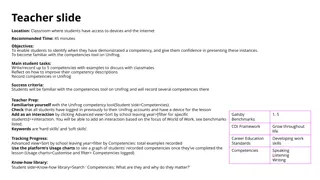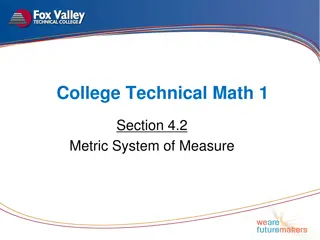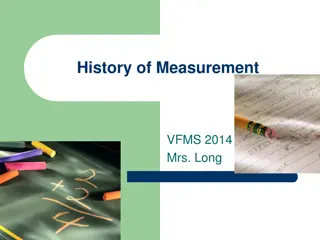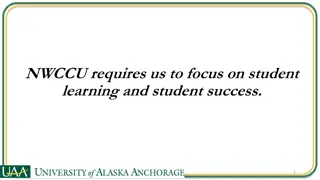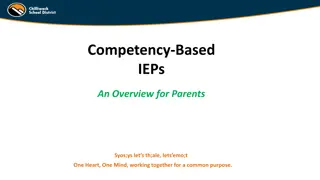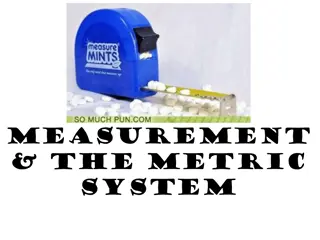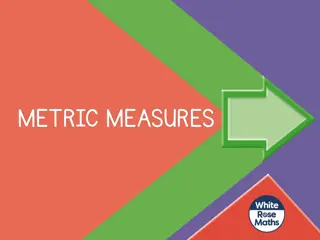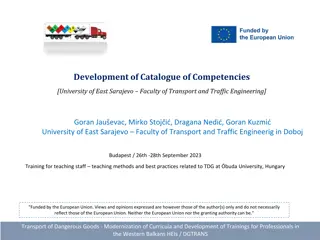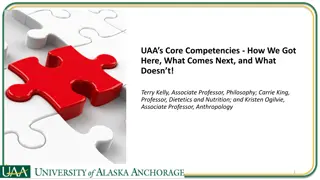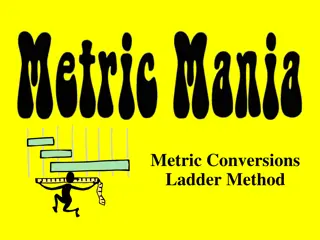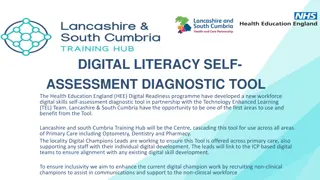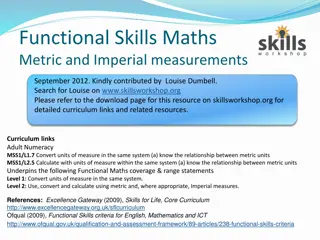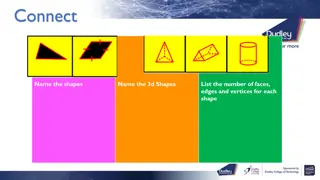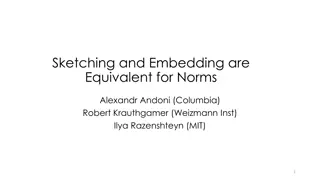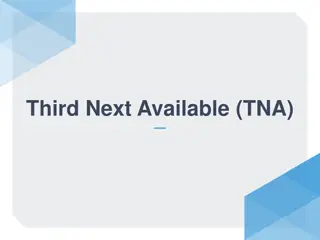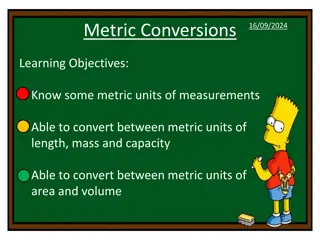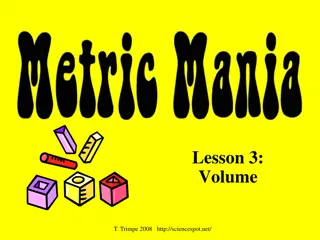Exploring FaSMEd: Digital Assessment, Metric System, and Core Competencies
Discover the world of FaSMEd through digital assessment environments, metric system teachings, and core competencies in converting measures of weight and length. Engage in discussions about student responses, teaching experiences, and standard measurement units while mastering key concepts such as relations between measurement units and knowing fundamental facts. Dive into practical problem-solving scenarios to enhance understanding and application of mathematics concepts.
Download Presentation

Please find below an Image/Link to download the presentation.
The content on the website is provided AS IS for your information and personal use only. It may not be sold, licensed, or shared on other websites without obtaining consent from the author. Download presentation by click this link. If you encounter any issues during the download, it is possible that the publisher has removed the file from their server.
E N D
Presentation Transcript
FaSMEd FaSMEd Working with the Digital Assessment Environment FaSMEd Meeting 2 1
FaSMEd FaSMEd Programme Evaluation Percents and Fractions Ahead with the DAE - Metric system - Graphs Next steps 2
FaSMEd FaSMEd Discussion Percents and Fractions Responses of students after completing the tests? When you checked the results, what did you notice first ? What went well? What was difficult? 3
FaSMEd FaSMEd Discussion Percents and Fractions What did you learn from the results? What have you done with it , or are you going to do with it? Test B? Questions and ideas for use? 4
FaSMEd FaSMEd Metric What does this consist of? Not: measuring as an activity But how the various units of measurement relate: the metric system. What are your teaching experiences with the metric system ? 5
FaSMEd FaSMEd 1 F and 1 S: have at the ready Is equal to: 1000 m 10 dm 10 cm 100 cm 10 mm 1 km 1 m 1 dm 1 m 1 cm 6
FaSMEd FaSMEd Relations between some standard measurement units km m dm cm mm l dl , cl, ml kg g mg Dutch reference level 1F: primarily from larger units to smaller units (in meaningful situations) Dutch reference level 1S: also from smaller units to larger units, and working with decimal numbers (also without a situation) 7
FaSMEd FaSMEd 1F and 1S: knowing your facts 1 dm3= 1 litre = 1000 ml (for reference level 1F) 1 m3= 1000 litres (for reference level 1S) 8
FaSMEd FaSMEd Core competencies metric system Core competency Converting measures of weight: g, kgProblem 1 Test A Toets B Problem 1 A shopping bag weighs 3 kg. 40 grams are added. How many grams does the bag weigh now? ... grams Click what is more: 5 kg or 7000 grams. How many grams is the difference? ... grams Problem 2 The height of a crate is 60 cm. A pile of five of these crates is meters high. Problem 2 A window is 2 m and 4 dm high. How many centimeters is the height of the window? ... cm Converting measures of length: cm, dm, m, km Problem 3 A sports field is 50 meters wide and 150 meters long. How many kilometers ran the students after 10 laps? ... km Problem 4 Click what is bigger: a terrace of 10 m2or a terrace of 800 dm2. How many dm2is the difference? ... dm2 Problem 3 A sports field is 40 meters wide and 60 meters long. After how many laps did the students run exactly 4 km? After ... laps Problem 4 How many m2of tiles are needed to make a terrace of 50 dm wide and 60 dm long? ... m2 Converting measures of area: m2, cm2 Problem 5 Click which tank can hold the most: a tank of 30 liters or a tank of 28 dm3. How many deciliters is the difference? deciliters Problem 6 One glass can 200 ml of lemonade. There are 3 liters of lemonade. How many glasses can you fill? glasses Problem 5 Click which tank can hold the most: a tank of 4000 milliliters or a tank of 10 dm3. How many deciliters is the difference? ... dl Problem 6 A bottle can hold 150 milliliters of perfume. A container contains 6 liters of perfume. How many bottles can be filled with this? ... bottles Converting measures of volume: dm3, cm3, liter, dl Converting liter, dl, cl, and ml 9
FaSMEd FaSMEd Graphs Common topic in FaSMEd project: time-distance graphs. Not a regular component of the mathematics curriculum in primary education (in the Netherlands). Test show what students already know and are capable of without instruction. 10
FaSMEd FaSMEd Time - distance Conclusions possible about speed Speed is a rate, a special ratio between two related measurements (so many km in so many hrs) expressed as one number. For example, 100 km/h 11
FaSMEd FaSMEd Graphs in DAE From visualisation: To scheme: To graph: 12
FaSMEd FaSMEd Core competencies graphs Core competency Pictorially represented data: Drawing conclusions about speed for various distances that have been covered in the same amount of time Test A Problem 1 (see manual) Test B Problem 1 (see manual) Problem 2 (see manual) Problem 2 (see manual) Schematically presented time-distance schedule: Drawing conclusions about speed for fixed equal distances that have been covered in varying amounts of time Problem 3 (see manual) Problem 3 (see manual) Schematically presented time-distance schedule: Drawing conclusions about the speed for varying distances that have been covered in fixed time slots Problem 4 (see manual) Problem 4 (see manual) Completing a time-distance graph based on a schematically presented time-distance schedule in which the covered distances and needed time intervals are given Problem 5 (see manual) Problem 5 (see manual) Reading data from a time-distance graph and making the corresponding schematic time-distance schedule Problem 6 (see manual) Problem 6 (see manual) Using the verbal description of travel times and covered distances for making the corresponding time-distance graph Problem 7 (see manual) Problem 7 (see manual) Drawing conclusions about speed based on a time-distance graph 13
FaSMEd FaSMEd How to continue? Complete tests metric system and graphs Last meeting 14
FaSMEd FaSMEd Next meeting Evaluation Metric sytem Evaluation Graphs General evaluation Information about further use of the DAE How to proceed? 15
FaSMEd FaSMEd Important dates Week number Date 1st FaSMEd meeting Completing Test A percents Completing Test A fractions 2nd FaSMEd meeting Completing Test A metric system Completing Test A graphs 3rd FaSMEd meeting 16
FaSMEd FaSMEd Finally Questions/problems progress? Send an e-mail to <your e-mail address> Questions/problems DAE? Send an e-mail to M.J.Abels@uu.nl (Mieke Abels) 17
FaSMEd FaSMEd Colophon This PowerPoint was designed by Ilona Friso-van den Bos, Mieke Abels & Marja van den Heuvel-Panhuizen Freudenthal Group, Faculty of Social and Behavioural Sciences Freudenthal Institute, Faculty of Science Utrecht University 18
